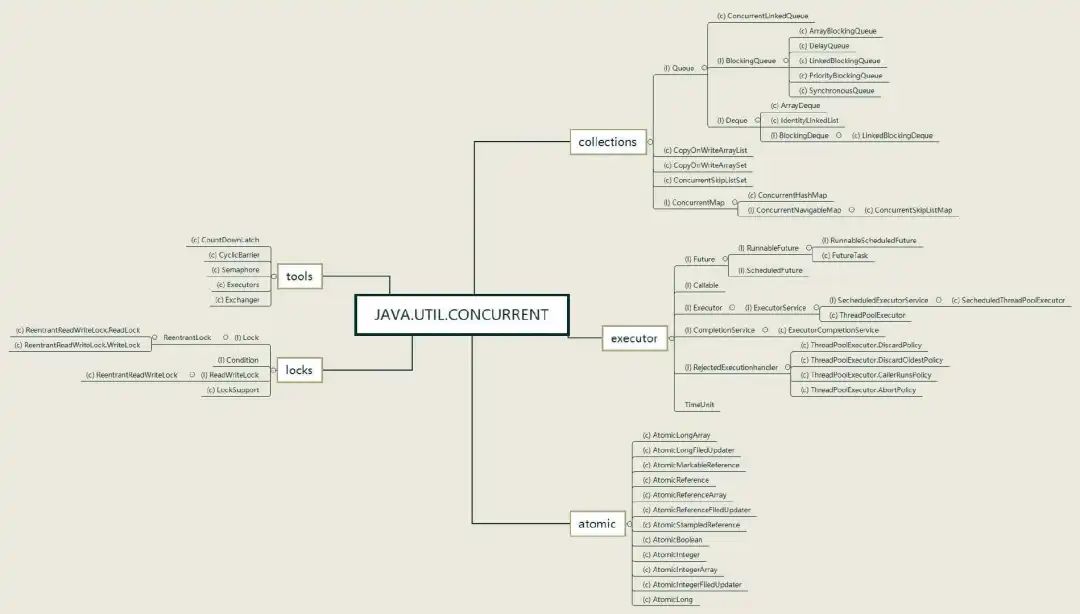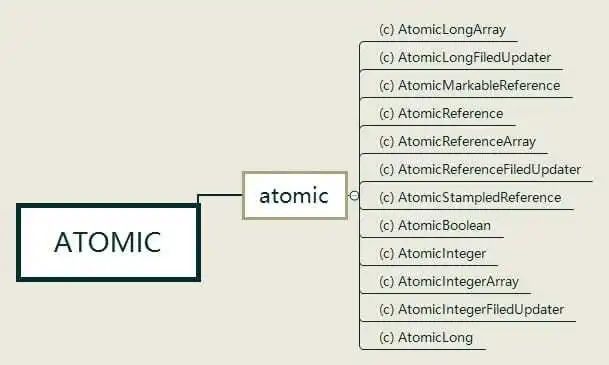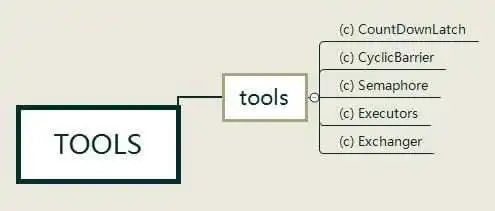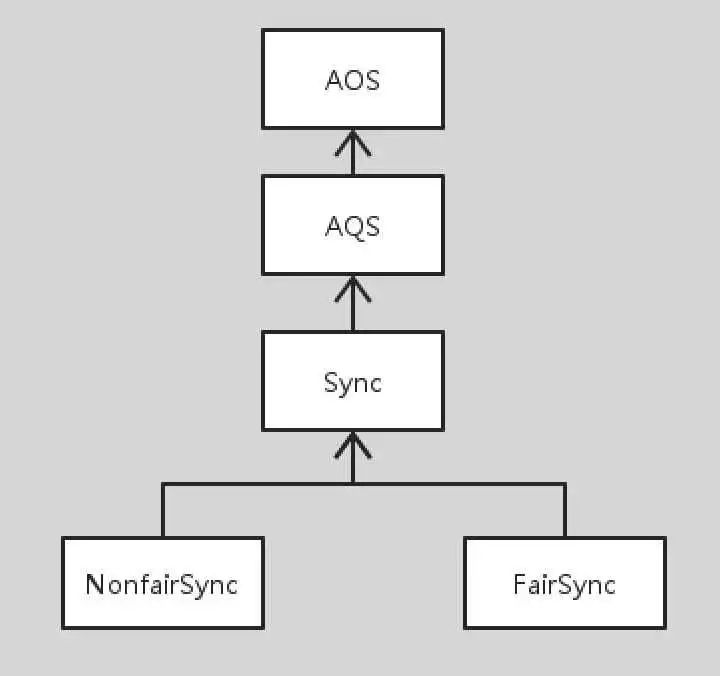【92期】面试官:你说你精通Java并发,那给我讲讲J.U.C吧
阅读本文大概需要 13 分钟。
来自:https://www.zybuluo.com/adamhand/note/1313016
J.U.C
J.U.C和CAS和Unsafe和AQS
J.U.C框架

Atomic

Locks

Collections

Executor

Tools

CAS与sun.misc.Unsafe
Doug Lea并发编程文章全部译文
J.U.C体系结构(java.util.concurrent)
JAVA并发编程J.U.C学习总结
J.U.C - AQS
可重入锁
AQS
volatileintstate这样的一个属性同时配合Unsafe工具对其原子性的操作来实现对当前锁的状态进行修改。当state的值为0的时候,标识该Lock不被任何线程所占有。ReentrantLock锁的架构

AQS框架
总体框架图

域和方法
private transient volatile Node head; //同步队列的head节点
private transient volatile Node tail; //同步队列的tail节点
private volatile int state; //同步状态
protected final int getState(); //获取同步状态
protected final void setState(int newState); //设置同步状态
protected final boolean compareAndSetState(int expect, int update); //CAS设置同步状态
private volatile int state;
protected final int getState() {
return state;
}
protected final void setState(int newState) {
state = newState;
}
protected final boolean compareAndSetState(int expect, int update) {
// See below for intrinsics setup to support this
return unsafe.compareAndSwapInt(this, stateOffset, expect, update);
}
自定义资源共享方式
isHeldExclusively():该线程是否正在独占资源。只有用到condition才需要去实现它。
tryAcquire(int):独占方式。尝试获取资源,成功则返回true,失败则返回false。
tryRelease(int):独占方式。尝试释放资源,成功则返回true,失败则返回false。
tryAcquireShared(int):共享方式。尝试获取资源。负数表示失败;0表示成功,但没有剩余可用资源;正数表示成功,且有剩余资源。
tryReleaseShared(int):共享方式。尝试释放资源,如果释放后允许唤醒后续等待结点返回true,否则返回false。
源码解析
1. acquire(int)
public final void acquire(int arg) {
if (!tryAcquire(arg) &&
acquireQueued(addWaiter(Node.EXCLUSIVE), arg))
selfInterrupt();
}
tryAcquire()尝试直接去获取资源,如果成功则直接返回;
addWaiter()将该线程加入等待队列的尾部,并标记为独占模式;
acquireQueued()使线程在等待队列中获取资源,一直获取到资源后才返回。如果在整个等待过程中被中断过,则返回true,否则返回false。
如果线程在等待过程中被中断过,它是不响应的。只是获取资源后才再进行自我中断selfInterrupt(),将中断补上。
1.1 tryAcquire(int)
protected boolean tryAcquire(int arg) {
throw new UnsupportedOperationException();
}
1.2 addWaiter(Node)
private Node addWaiter(Node mode) {
//以给定模式构造结点。mode有两种:EXCLUSIVE(独占)和SHARED(共享)
Node node = new Node(Thread.currentThread(), mode);
//尝试快速方式直接放到队尾。
Node pred = tail;
if (pred != null) {
node.prev = pred;
if (compareAndSetTail(pred, node)) {
pred.next = node;
return node;
}
}
//上一步失败则通过enq入队。
enq(node);
return node;
}
1.2.1 enq(node)
private Node enq(final Node node) {
//CAS"自旋",直到成功加入队尾
for (;;) {
Node t = tail;
if (t == null) { // 队列为空,创建一个空的标志结点作为head结点,并将tail也指向它。
if (compareAndSetHead(new Node()))
tail = head;
} else {//正常流程,放入队尾
node.prev = t;
if (compareAndSetTail(t, node)) {
t.next = node;
return t;
}
}
}
}
1.3 acquireQueued(Node, int)
final boolean acquireQueued(final Node node, int arg) {
boolean failed = true;//标记是否成功拿到资源
try {
boolean interrupted = false;//标记等待过程中是否被中断过
//又是一个“自旋”!
for (;;) {
final Node p = node.predecessor();//拿到前驱
//如果前驱是head,即该结点已成老二,那么便有资格去尝试获取资源(可能是老大释放完资源唤醒自己的,当然也可能被interrupt了)。
if (p == head && tryAcquire(arg)) {
setHead(node);//拿到资源后,将head指向该结点。所以head所指的标杆结点,就是当前获取到资源的那个结点或null。
p.next = null; // setHead中node.prev已置为null,此处再将head.next置为null,就是为了方便GC回收以前的head结点。也就意味着之前拿完资源的结点出队了!
failed = false;
return interrupted;//返回等待过程中是否被中断过
}
//如果自己可以休息了,就进入waiting状态,直到被unpark()
if (shouldParkAfterFailedAcquire(p, node) &&
parkAndCheckInterrupt())
interrupted = true;//如果等待过程中被中断过,哪怕只有那么一次,就将interrupted标记为true
}
} finally {
if (failed)
cancelAcquire(node);
}
}
1.3.1 shouldParkAfterFailedAcquire(Node, Node)
private static boolean shouldParkAfterFailedAcquire(Node pred, Node node) {
int ws = pred.waitStatus;//拿到前驱的状态
if (ws == Node.SIGNAL)
//如果已经告诉前驱拿完号后通知自己一下,那就可以安心休息了
return true;
if (ws > 0) {
/*
* 如果前驱放弃了,那就一直往前找,直到找到最近一个正常等待的状态,并排在它的后边。
* 注意:那些放弃的结点,由于被自己“加塞”到它们前边,它们相当于形成一个无引用链,稍后就会被保安大叔赶走了(GC回收)!
*/
do {
node.prev = pred = pred.prev;
} while (pred.waitStatus > 0);
pred.next = node;
} else {
//如果前驱正常,那就把前驱的状态设置成SIGNAL,告诉它拿完号后通知自己一下。有可能失败,人家说不定刚刚释放完呢!
compareAndSetWaitStatus(pred, ws, Node.SIGNAL);
}
return false;
}
1.3.2 parkAndCheckInterrupt()
private final boolean parkAndCheckInterrupt() {
LockSupport.park(this);//调用park()使线程进入waiting状态
return Thread.interrupted();//如果被唤醒,查看自己是不是被中断的。
}
1.3.3 acquireQueued()小结
结点进入队尾后,检查状态,找到安全休息点;
调用park()进入waiting状态,等待unpark()或interrupt()唤醒自己;
被唤醒后,看自己是不是有资格能拿到号。如果拿到,head指向当前结点,并返回从入队到拿到号的整个过程中是否被中断过;如果没拿到,继续流程1。
1.4 acquire()小结
调用自定义同步器的tryAcquire()尝试直接去获取资源,如果成功则直接返回;
没成功,则addWaiter()将该线程加入等待队列的尾部,并标记为独占模式;
acquireQueued()使线程在等待队列中休息,有机会时(轮到自己,会被unpark())会去尝试获取资源。获取到资源后才返回。如果在整个等待过程中被中断过,则返回true,否则返回false。
如果线程在等待过程中被中断过,它是不响应的。只是获取资源后才再进行自我中断selfInterrupt(),将中断补上。
J.U.C - 其它组件(这部分还需要细致总结)
FutureTask
public class FutureTask<V> implements RunnableFuture<V>
public interface RunnableFuture<V> extends Runnable, Future<V>
public class FutureTaskExample {
public static void main(String[] args) throws ExecutionException, InterruptedException {
FutureTask<Integer> futureTask = new FutureTask<Integer>(new Callable<Integer>() {
@Override
public Integer call() throws Exception {
int result = 0;
for (int i = 0; i < 100; i++) {
Thread.sleep(10);
result += i;
}
return result;
}
});
Thread computeThread = new Thread(futureTask);
computeThread.start();
Thread otherThread = new Thread(() -> {
System.out.println("other task is running...");
try {
Thread.sleep(1000);
} catch (InterruptedException e) {
e.printStackTrace();
}
});
otherThread.start();
System.out.println(futureTask.get());
}
}
other task is running...
4950
BlockingQueue
FIFO 队列 : LinkedBlockingQueue、ArrayBlockingQueue(固定长度)
优先级队列 : PriorityBlockingQueue 提供了阻塞的 take() 和 put() 方法:如果队列为空 take() 将阻塞,直到队列中有内容;如果队列为满 put() 将阻塞,直到队列有空闲位置。
public class ProductorConsumer {
private static BlockingQueue<String> quene = new ArrayBlockingQueue<>(5);
private static class Productor extends Thread{
@Override
public void run() {
try {
quene.put("product");
} catch (InterruptedException e) {
e.printStackTrace();
}
System.out.print("productor...");
}
}
private static class Consumer extends Thread{
@Override
public void run() {
try {
String product = quene.take();
} catch (InterruptedException e) {
e.printStackTrace();
}
System.out.print("consumer...");
}
}
public static void main(String[] args) {
for(int i = 0; i < 2; i++){
Productor productor = new Productor();
productor.start();
}
for(int i = 0; i < 5; i++){
Consumer consumer = new Consumer();
consumer.start();
}
for(int i = 0; i < 3; i++){
Productor productor = new Productor();
productor.start();
}
}
}
productor...productor...consumer...consumer...productor...productor...consumer...consumer...productor...consumer...
ForkJoin
import java.util.concurrent.RecursiveTask;
public class ForkJoinExample extends RecursiveTask<Integer> {
private final int threshold = 5;
private int first;
private int last;
public ForkJoinExample(int first, int last) {
this.first = first;
this.last = last;
}
@Override
protected Integer compute() {
int result = 0;
if (last - first <= threshold) {
// 任务足够小则直接计算
for (int i = first; i <= last; i++) {
result += i;
}
} else {
// 拆分成小任务
int middle = first + (last - first) / 2;
ForkJoinExample leftTask = new ForkJoinExample(first, middle);
ForkJoinExample rightTask = new ForkJoinExample(middle + 1, last);
leftTask.fork();
rightTask.fork();
result = leftTask.join() + rightTask.join();
}
return result;
}
}
窃取算法(工作窃密算法)
优点:充分利用线程进行并行计算,减少线程间的竞争。
缺点:在某些情况下还是会存在竞争,比如双端队列里只有一个任务时。并且该算法会消耗更多的系统资源, 比如创建多个线程和多个双端队列。
可以使用LinkedBlockingDeque来实现工作窃取算法
JDK1.7引入的Fork/Join框架就是基于工作窃取算法
推荐阅读:
【91期】面试官:Spring 用了哪些设计模式?说三种即可
【90期】面试官:说一下使用 Redis 实现大规模的帖子浏览计数的思路
【89期】面试官 5 连问一个 TCP 连接可以发多少个 HTTP 请求?
微信扫描二维码,关注我的公众号
朕已阅 

